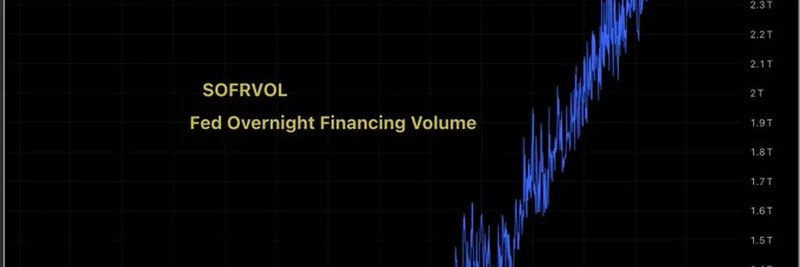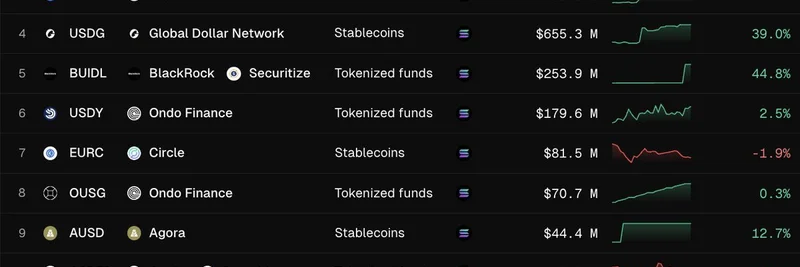Hey there, crypto enthusiasts and blockchain practitioners! If you’ve been keeping an eye on the financial markets lately, you might have noticed a tweet from MartyParty (@martypartymusic) on July 2, 2025, that’s got everyone talking. The post highlights a fascinating chart from TradingView showing the Secured Overnight Financing Rate Volume (SOFRVOL), which tracks the total value of overnight repurchase agreement (repo) transactions backed by U.S. Treasury securities. This metric has been climbing steadily since late 2022, hitting all-time highs, and it’s a signal worth decoding—especially for those of us interested in how this impacts meme tokens and the broader crypto ecosystem.
What Is SOFRVOL, Anyway?
Let’s break it down simply. SOFRVOL, or Fed Overnight Financing Volume, measures the amount of money flowing through short-term loans where U.S. Treasury securities act as collateral. Think of it like a financial lifeline banks use to borrow cash overnight, ensuring the system keeps running smoothly. The chart shared by MartyParty shows this volume spiking from around $800 billion in 2019 to a staggering $3.1 trillion by mid-2025. That’s a huge jump, and it’s got people wondering what’s driving it.
Why the Surge Since Late 2022?
The tweet doesn’t dive into the “why” directly, but let’s connect the dots based on what’s been happening in the financial world. Since late 2022, the U.S. Federal Reserve has been navigating tricky economic waters—think inflation pressures, rising interest rates, and massive government spending (like the $5 trillion debt ceiling increase MartyParty mentioned in an earlier post [https://x.com/martypartymusic/status/1940195117736014124]). When the Fed pumps money into the system or when banks need more liquidity, they turn to these overnight repo transactions. The steady climb in SOFRVOL suggests banks are leaning heavily on this mechanism, possibly to manage cash shortages or stabilize the financial system.
What Does This Mean for Crypto and Meme Tokens?
Now, let’s get to the juicy part for meme token fans and blockchain pros. A rising SOFRVOL often signals increased liquidity in the financial system. More money sloshing around can mean more investment flowing into riskier assets like cryptocurrencies and meme tokens. Remember how MartyParty tied this to Bitcoin and stablecoin-backed blockchain networks hitting new highs? That’s no coincidence. When the Fed’s actions flood the market with cash, it can boost speculative investments, including the wild world of meme coins on meme-insider.com.
But there’s a flip side. If this liquidity surge leads to inflation (as MartyParty warned), the value of the U.S. dollar could weaken. For meme token holders, this might mean short-term gains but long-term uncertainty. Stablecoins, which are often pegged to the dollar, could also face pressure, affecting projects built on those networks.
Keeping an Eye on the Trend
MartyParty’s tweet points us to TradingView to track SOFRVOL live, and it’s a great tool for staying ahead of the curve. The chart’s upward trajectory since late 2022—unbroken until at least July 2025—suggests this trend isn’t slowing down anytime soon. For blockchain practitioners, this is a chance to analyze how macroeconomic shifts influence crypto markets and adjust strategies accordingly.
Final Thoughts
The SOFRVOL surge is more than just a financial geek’s chart—it’s a window into how the Fed’s moves ripple through to our favorite meme tokens and blockchain projects. Whether you’re hodling a quirky coin or building the next big decentralized app, keeping an eye on these trends can give you an edge. What do you think this means for your portfolio? Drop your thoughts in the comments, and let’s dive deeper into this financial adventure together!
Disclaimer: This article is for informational purposes only and not financial advice. Always do your own research before investing.




